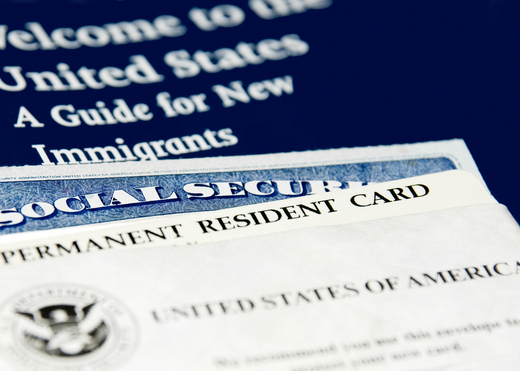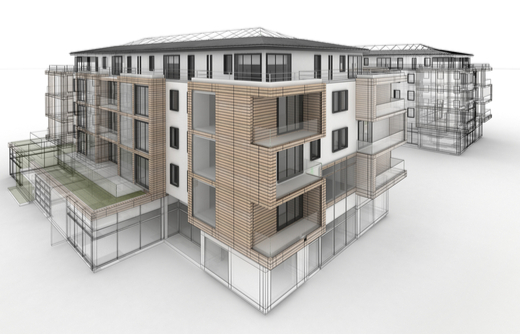
Updated by Dillon Colucci and staff
One of the most frequently asked questions by prospective EB-5 applicants is “How much does an EB-5 visa cost?” What many believe may be an easy question turns out to be quite complex when you try to be comprehensive. That is why many answers will highlight only the filing fees, immigration fees, and the minimum investment. However, there are many other costs throughout the EB-5 lifecycle that need to be considered.
How Much Should I Invest in EB-5: TEA or non-TEA?
This is the most important cost consideration. In any of the scenarios, the investor must evaluate whether or not the investment is located in a targeted employment area (TEA). If an investment is located in a TEA, the minimum investment amount is $800,000. If an investment is not located in a TEA, the minimum EB-5 capital needed to invest is $1.05 million.
Three Categories of EB-5 Investments with Different Costs
In order to understand costs, we have to determine what type of EB-5 investment an investor is seeking. In other words, what model of EB-5? For the purposes of this exercise, let’s break down the types of EB-5 investments into three broad categories: direct EB-5 investment, an off-the-shelf EB-5 investment, and a regional center EB-5 investment. It is up to the EB-5 investors to do their due diligence and research while being equipped with the right questions to ask about costs and knowledge of EB-5 requirements.
1. Direct EB-5 Investment Cost

What we are defining as a direct EB-5 investment is a business investment created out of whole-cloth by the investor. This scenario is one where an investor has a business idea and intends to roll up his or her sleeves and implement it. The investor in this scenario is the sole person in the investment seeking a green card from the EB-5 program.
EB-5 Administration Fee: Direct Investment
The off-the-shelf direct EB-5 and regional center EB-5 investments are pre-structured to varying degrees. Typically, the cost of pre-structuring the investment is passed along to an investor in the form of an administrative fee, which we will discuss further below.
Here, in a direct EB-5 investment, since the investor is structuring this investment themselves, there is no administrative fee. However, any professional fees to ensure the investment is EB-5 compliant are incurred solely by the investor, rather than spread across multiple investors. The costs to ensure compliance with the EB-5 program can include legal fees, business plan writer fees, economist fees, and third-party reporting fees, among others.
EB-5 TEA Report Fee
In a regional center EB-5 and an off-the-shelf direct EB-5, the investment is most likely already located in a TEA. Typically, the individuals who structure those investments will prepare a TEA report designed to be submitted with an EB-5 investor’s I-526 petition to demonstrate to USCIS that the investment is located within a TEA. In a direct EB-5, the investor will be responsible for obtaining their own TEA report, which can cost approximately $500 – $1,000 in fees to an appropriate service provider.
EB-5 Business Plan Fee
Similar to the TEA report, an investor in the direct EB-5 scenario is responsible for obtaining an EB-5 compliant business plan. This cost can range from $2,500 to $10,000, or more, depending upon the nature of the business. Additionally, each business plan should be supported by independent, objective, and verifiable market research regarding the industry of the business. Obtaining a market research report is likely an additional cost.
EB-5 Attorney Fees: Direct Investment
Unlike an off-the-shelf direct EB-5 or a regional center EB-5 investment, an investor should obtain proper legal counsel from a competent immigration attorney to ensure all aspects of their chosen investment is EB-5 compliant. This type of immigration counsel is separate and apart from the immigration attorney’s advice regarding source of funds. In essence, the immigration attorney in a direct EB-5 has to complete at least double the amount of work. The immigration attorney’s fee for the I-526 petition can range from up to and more than $50,000.
A direct EB-5 may require the legal advice of other attorneys. For instance, the direct EB-5 investor will typically be establishing a new business, which could require the services of a corporate attorney. If the business is related to real estate, a real estate attorney may be necessary. Any of these additional legal fees will be borne by the investor.
2. Off-the-shelf Direct EB-5 Investment Fees

An off-the-shelf direct EB-5 investment can be defined as a non-regional center investment (i.e. direct) that is pre-structured for an investment. These scenarios are similar to regional center EB-5 investment in that a business opportunity is typically brought to an investor with a ready-made structure that requires or permits little or no changes. Generally, the investor will be able to make the investment and will permit another party to manage the investment, with the investor as a passive investor. However, there may be opportunities for a more active investor.
Administration Fee
The administrative fee is typically the cost of structuring the investment to be EB-5 compliant. In an off-the-shelf direct EB-5 investment, there may be varying degrees of structuring completely. Generally, an investor can expect a lower administrative fee based on the amount of structuring completed by the persons or person who have structured the investment.
Legal Fees
Here, similar to a regional center EB-5 investment, and unlike a direct EB-5 investment, the immigration attorney should have to do little if any work ensuring that the structure is EB-5 compliant. The immigration attorney should still be reviewing the off-the-shelf direct EB-5 structure to ensure immigration compliance. The immigration attorney’s primary focus will typically be on ensuring the investor’s source of funds is compliant. Therefore, the immigration legal fee for the I-526 petition will typically be less than a direct EB-5 investment immigration legal fee.
3. Regional Center EB-5 investment Cost

A regional center EB-5 investment is the most common type of EB-5 investment. Generally speaking, an investor will invest in a pre-prepared investment structure where a regional center or developer has established a new commercial enterprise ready to accept investors. The new commercial enterprise will usually make a loan (known as an EB-5 loan) or equity investment in another entity, usually know as a job creating entity.
EB-5 Administration Fees: Regional Center Investment
Similar to an off-the-shelf direct EB-5 investment, a regional center EB-5 investment is pre-structured and will require an administrative fee. Regional center EB-5 investments typically have higher structuring costs because they are usually more complex than off-the-shelf direct EB-5 investments (which does not mean they are necessarily better or worse). Administrative fees can vary from approximately $20,000 to $90,000.
EB-5 Lawyer Fees: Regional Center Investment
Similar to an off-the-shelf EB-5 investment, the immigration attorney has less work to do to ensure the structure is EB-5 compliant versus a direct EB-5 investment. The immigration attorney’s primary focus is on ensuring the investors source of funds is compliant and the I-526 petition legal fee should be less than a direct EB-5 investment immigration legal fee.
EB-5 Visa Government Fees
Government filing fees are easiest to understand when they are broken down by each step in the immigration process. Please note, these are always subject to change by the U.S. government at any time.
EB-5 I-526 Petition Fee
The filing fee for an I-526 petition, which is the first step in the EB-5 process, is $3,675. This fee is for the investor and any dependents.
Adjustment of Status or Immigrant Visa Processing Fees
The second step in the EB-5 process is to obtain the conditional green card after approval of the I-526 petition. This happens after the waiting period for a visa number become available, if applicable. Once a visa number is available, if an investor is outside the U.S. they must process through the National Visa Center and an embassy or consulate abroad. The immigrant visa fee is $345 per person. After receipt of the immigrant visa, the investor can enter the U.S. and USCIS will thereafter produce their green cards and mail them to the investor’s U.S. address. The fee for production and mailing is $220.
If the investor already is in the U.S. in a certain status when the visa number is available, they will file an I-485 application to adjust their status in the U.S. The filing fee for an I-485 is likely $1,140 for the investor, not including a required $85 biometrics fee. Those fees are per person, however children under 14 and applicants over 79 have reduced fees.
EB-5 I-829 Petition
The final step in the process is to remove conditions on residence by filing the I-829 petition. The filing fee for the I-829 petition is $3,750. This fee is for the investor and all dependents who file with the investor. If the investor has a dependent who enters the U.S. or adjusts status later than the investor, the dependent may have to file their own I-829 petition, which would require another filing fee.
EB-5 Immigration Fees Post-I-526 Petition
The immigration fees for the I-526 petition are set forth above, and largely depend upon whether the EB-5 investment is properly structured, and/or the investor’s source of funds is complex. The immigration legal fees post I-526 petition are more predictable, and largely variable based on the number of family members.
At the second step in the EB-5 process, the immigrant visa and adjustment of status legal fees can range up to $5,000 per applicant. These fees are generally based on the number of dependents because, unlike an I-526 petition or I-829 petition, each person is required to file their own application.
In the third step in the EB-5 process, the I-829 petition can include the investor and all their applicable dependents. The fee for preparation of an I-829 petition based on a template provided by an off-the-shelf direct EB-5 and regional center EB-5 can range up to $10,000. It is important to note that in a direct EB-5 investment, an immigration attorney is required to do all preparation, assembling and drafting of the required documents to demonstrate the removal of conditions. Therefore, the immigration legal fee for an I-829 petition in a direct EB-5 investment will be much higher than an off-the-shelf direct EB-5 or regional center EB-5 investment.
Travel and Relocation Costs
Investors should also factor in any applicable travel and relocation costs. At minimum, an investor should factor in one trip to enter the U.S. to obtain the conditional green card. Typically, investors will need to factor and calculate multiple trips to the U.S.
Tax Considerations
Investors should consult tax attorneys to determine the tax consequences of obtaining a green card and spending more than half the year physically present in the U.S. This can include the tax costs as well as any tax professional fees.
Be aware of EB-5 visa fees
Investors should be aware of all the costs before embarking on the EB-5 visa. It is important for investors to do their due diligence and research while being equipped with the right questions to ask about EB-5 visa costs and knowledge of EB-5 requirements, while considering the various differences between the three investment models discussed above. It is recommended to seek professional legal advice before applying for any type of immigration visa including EB-5.






